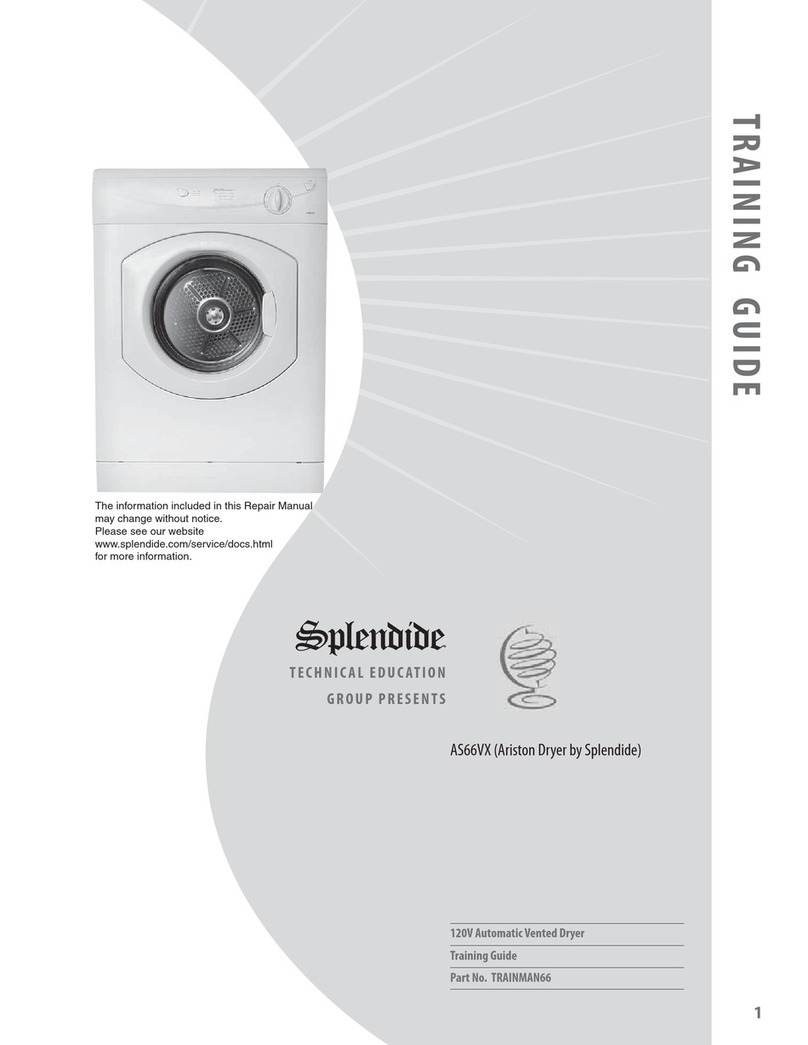
Laundry
Sorting your laundry
Household Items
Duvet cover Cotton 1500 g 3 lb 5 oz
(Double) Other 1000 g 2 lb 3 oz
Large Tablecloth 700 g 1 lb 6 oz
Small Tablecloth 250 g 9 oz
Tea Towel 100 g 3 oz
Bath Towel 700 g 1 lb 6oz
Hand Towel 350 g 12 oz
Double Sheet 500 g 1 lb 2 oz
Single Sheet 350 g 12 oz
Wash Care Labels
Look at the labels on your garments, especially when
tumble drying for the first time. The following symbols are
the most common:
May be tumble dried
Do not tumble dry
Tumble dry at high heat setting
Tumble dry at low heat setting
What not to tumble dry in your dryer:
WARNING
Fire Hazard
No washer can completely remove oil.
Do not dry anything that has ever had any type of oil on
it (including cooking oils).
Do not dry items containing foam, rubber, or plastic in
this dryer.
Doing so can result in death or fire.
WARNING
Explosion Hazard
Keep flammable materials and vapors, such as
gasoline, away from dryer.
Do not dry anything that has ever had anything
flammable on it (even after washing).
Failure to follow these instructions can result in death,
explosion, or fire.
• Check symbols on clothing labels to make sure that
the articles can be tumble dried.
• Sort laundry by fabric type.
• Empty pockets and check buttons.
• Close zippers and hooks and tie loose belts and
strings.
• Wring out each item in order to eliminate as much
excess water as possible.
Do not load dripping wet clothes into the dryer.
• Articles that contain rubber or rubber-like materials
or plastic film (pillows, cushions, or PVC rainwear),
any other flammable objects or objects that contain
flammable substances (towels soiled with hair spray).
• Glass fibres (certain types of draperies).
• Items which have been dry cleaned.
• Items with the ITCL Code (see Special clothing items)
. These can be cleaned with special at-home dry
cleaning products. Follow instructions completely.
• Large bulky items (quilts, sleeping bags, pillows,
cushions, large bedspreads etc). These expand
when drying and would prevent airflow through the
dryer.
Maximum load size
Do not load more than maximum capacity.
These numbers refer to dry weight:
Natural fibres: 6 kg max (13 lb)
Synthetic fibres: 3 kg max (6.6 lb)
Do not overload the dryer as this could result in
reduced drying performance.
Typical weights
Clothes
Blouse Cotton 150 g 5 oz
Other 100 g 3 oz
Jeans 700 g 1 lb 6 oz
10 Diapers 1000 g 2 lb 3 oz
Shirt Cotton 300 g 10 oz
T-Shirt 125 g 4 oz
Other 350 g 12 oz
Dress Cotton 500 g 1 lb 2 oz
Other 200 g 7 oz
At the end of a drying cycle, cottons could still be
damp if you grouped cottons and permanent press
items together. If this happens simply give them an
additional short period of drying.
EN
7





























